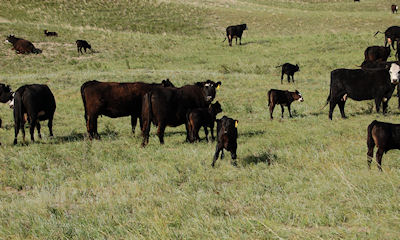February 18, 2016

For some cattle enthusiasts, opening the pages of a bull sale catalog brings the same joy going through toy catalogs did as kids. For others it’s an overwhelming task, with a growing list of genetic indices and options. And for some there is no selection process; a bull is just a bull. Here are a few considerations on why and how to start sorting through your bull selection process for your next herd sire.
Related: 5 key areas beef producers should manage in 2016

Are you prepared to select your future beef herd sire?
Before we consider genetics, remember the herd bull needs to successfully breed your herd in a relatively short period of time. He’s going to need to cover a lot ground every day. Look for functional traits such as sound feet and legs, mobility, body condition, disposition, masculinity, and a larger scrotal size. Ask yourself if this bull can physically get his job done for a full breeding season? Better yet, ask if the bull has recently had a Breeding Soundness Exam (BSE). While a BSE does not guarantee fertility, it’s a good tool for identifying infertile or sub-fertile bulls. More information on BSE evaluation can be found in the Wisconsin Beef Information Center article “What Breeding Soundness Does and Does Not Evaluate.”
It’s been said that if you look at the sale catalog before deciding what you are looking for, you’re not doing this right. Assess your needs, wants, and budget. If price is a concern, know what you can and cannot compromise on for traits. If you are looking for the cheapest bull possible, realize you may get what you pay for.
A few questions can help narrow your search.
Are you breeding for purebred production, or cross breeding? Will this sire be used on heifers, where calving ease is a consideration? Will you be retaining heifers from this sire, or will all offspring be marketed? Will calves be marketed as feeders, finished out, direct marketed, a branded beef program, grass based production, or a mix?
An honest assessment of your herd and the traits your market most values will help point you in the right direction. Simplified examples are if you do not plan to retain any heifers from this sire, a greater emphasis may be placed on carcass traits over maternal traits. Another is if you market feeders but not finished cattle, greater emphasis would be placed on weaning weights. If a bull will not be used on heifers, it may not make sense to pay a premium for a sire with exceptional calving ease scores.
~~~PAGE_BREAK_HERE~~~
In reality, we are often looking for multiple traits versus too much emphasis on only one trait. The first step is learning Expected Progeny Differences (EPD’s) for the breeds you work with. EPD’s are a tool to estimate a bulls genetic potential, based from parent averages, offspring if available, and more recently enhanced through genomic testing. Each breed will have a different scale for traits, i.e. a +23 for maternal milk in Breed A is average, whereas for Breed B it’s slightly below average. This is referred to as the base for each breed, and is important to know if trying to compare bulls of different breeds.
Related: Beef trade is changing
Look at reliability along with EPD’s. This is where genomic testing can make a difference by improving reliability. With young sires reliability’s will generally be lower, meaning their actual genetic potential may vary from their current EPD numbers. An example of where this can come into play is if we decide we need a minimum calving ease score of 2 from our next sire. If the bulls we are looking at are low reliability, we may need to select for a better score than 2. Just for example, if we instead select a sire with a calving ease score of 4 (higher score is better in this example) and he turns out not to be that good, we still have decent odds that he will at least be a 2.
To account for multiple traits, breeds may also publish indexes. For example, the American Angus Association calculates a Beef Value index that looks at post weaning and carcass performance. Indexes can be a great tool to easily evaluate multiple traits; however, it’s important to know the traits used for the index. Using the Beef Value index again as an example, it does not incorporate maternal traits. So it may not have as much value in selecting sires for replacement females.
Ask your breed organizations for breed averages and top rankings for EPD’s and indexes. North Dakota State University has an excellent publication titled "Understanding Expected Progeny Differences" that also may help first time EPD users. The Bull Buyers Guide by Travis Meteer, University of Illinois, is another excellent resource available on the Wisconsin Beef Information site.
Sterry is the St. Croix County Extension agriculture educator.
You May Also Like




